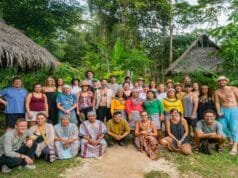Native plant gardens can help businesses like yours be appealing to your customers. Having urban edible plants is some of the best ways to restore the earth’s ecosystem, one tree at a time. Partnering with an eco-friendly business can help you foster the production of native species that lead to more sustainable wildlife.
Urban edibles help bring support to form a chain of mammals, bugs, birds, and other creatures and subspecies. Here are six edible species that work well in urban places and help you be more sustainable:
1. White Oaks
The white oaks are native swamp plants that provide the best quality foods for many species year-round. Their seeds attract animals like deer, game birds, and waterfowl.
The balance of all these species makes it possible for healthy soil to be present with a divergent layer of fungi and microorganisms. These sustainable practices will help wildlife thrive in any climate. Rich soil provides for a healthy balance of amphibians, bugs, mammals, and reptiles.
2. Rose Mallows
The rose mallow is a shrubby, moist plant from the Hibiscus family that produces flowers from summer to autumn. These plants bloom best near the edges of ponds or other wet areas. They use deep roots to absorb, clean out, and redirect stormwater. These effects bring a sense of belonging for birds, butterflies, and other crossbreeds.
Rose mallows benefit from rich soil that contains compost and manure. Rain garden solutions like these have a grassy farm and natural wetland qualities that provide solid alternatives to sewer systems. Native plant gardens with rose mallows reduce runoff water and flow rates to help urban centers be more eco-friendly.
As they grow, water them at least two times a week during warm weather. They’ll withstand any signs of wilt as long as you give the plants the water they need. Proactive care measures like these will help your rose mallows last in any conditions.
3. Robin Hill Serviceberry Cultivars
The Robin Hills are native species that boast constant color, compact size, and heavy fruiting. The cultivars have the unique traits of more than two species, as they make fertile offspring. They can grow fast and produce dense acorn crops. Some hybrids can even make crops earlier and bigger.
If your goal is to attract birds, these plants can help make it happen. Robin Hills thrive best in moist conditions and can withstand pollution. Birds stand to benefit the most from the insect-attracting qualities these native plants can bring. As you use these plants to attract wildlife, you’ll be on track to stand out as an eco-conscious brand.
4. Cardinal Flowers
Cardinal flowers are plants that come from North and South America. You can find them in moist soil areas like marshes, streambanks, swamps, and woods.
They have erect terminals that contain five-lobe flowers. They open up from top to bottom for many weeks. Hummingbirds pollinate these flowers as they find them attractive. They dip in their tongue for the nectar inside these flowers. Cardinal flowers will self-seed with the right conditions.
The best places to plant these flowers are in rainy and native gardens near streams or ponds. They mix well with a diverse range of moisture-nurturing plants that can grow in other colors.
5. New England Aster
The New England aster is a big plant that can grow over six feet tall. These flowers contain tight arrangements of clasping leaves on their stout stems. The colors are usually bright purple with an orange or yellow center. Some versions have blue, lavender, pink or white colors that help bring diversity to these unique plants.
As for wildlife benefits, asters attract bees and Monarch butterflies due to their nectar. They thrive best in native plant gardens or bioswales and balance out the water flow, similar to rose mallows.
6. Blue Star
The Blue Stars are blue flowers with star shapes that bloom in the late spring to early summer months. They attract long-tongue insects like bees, butterflies, and moths, and they also bring in hummingbirds.
You can grow them in full sun or partial shade in moderately moist soil. The flowers are pest and disease-free and are a nectar source for many species. Blue Stars can help benefit your cause in being an eco-conscious business while making a positive impact.
Build Native Plant Gardens That Transform Our Planet
As you design native plant gardens, make sustainability a priority. Eco-friendly gardens that help restore the earth’s ecosystem will help revitalize communities. Solutions like these will help you and your business be good stewards of our planet and transform our wildlife.















